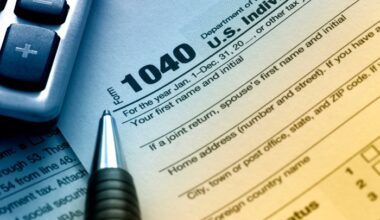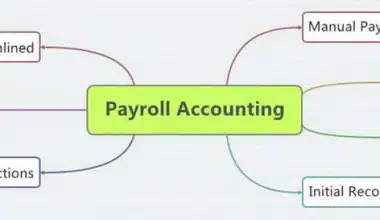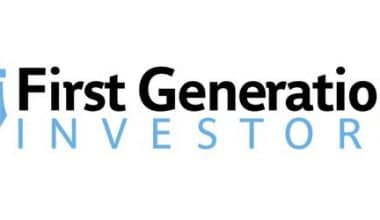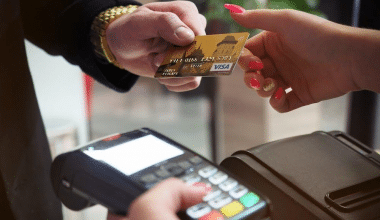ACH is a financial technology that many people use but few comprehend. ACH is used for tens of billions of transactions in the U.S. each year, including 94% of payroll. However, many people know it by a different name, and businesses may not know how to get more people to use it while still making sure that everyone involved benefits. In this blog post, we will clarify what an ACH payment is, how to make one, and the differences between ACH payments vs. EFT, and WIRE.
What is Ach?
The Automated Clearing House Network, or ACH, is a network that allows money to be transferred electronically between bank accounts in the United States. It is run by an organization called NACHA, which used to be called the National Automated Clearing House Association.
Nacha is in charge of the ACH network. She makes and enforces the rules that make the Automated Clearing House Network a safe and efficient way to send and receive money. The organization was started in 1974 and has been in charge of how ACH has changed since then. In 2021, more than $72.6 trillion were transferred as ACH transactions, which is a more than 17% increase from the previous year.
What is an Ach Payment?
An ACH payment is an electronic bank-to-bank transfer. Instead of using card networks, wire transfers, physical checks, or cash, you can move money between bank accounts using the Automated Clearing House Network system.
The Automated Clearing House network is situated in the United States and serves the United States Virgin Islands, Guam, American Samoa, and the Northern Mariana Islands.
Because international Automated Clearing House Network transfers are possible, they are often transmitted by wire transfer. Therefore ACH payments are not commonly made in the United Kingdom, the Eurozone, or anywhere else outside of the United States and its territories (largely due to speed). ACH payments are also known as ACH transfers or transactions.
How ACH Payments Work
ACH stands for Automated Clearing House, which is only relevant since the “clearing” element involves numerous security procedures. Even though they are electronic payments, the transfer normally takes 2-4 business days to complete.
Yet, one of the benefits of making an ACH payment is that the money is disbursed instantly. Even if the company you’re paying can’t use the funds for a few days, you’ll know they’re on the way, and they’ll know they’ve been paid.
This also simplifies bank reconciliation because you no longer have to deal with checks that have been mailed but not cashed. So you don’t have to worry about having enough money in your account to cover those checks—payments that could arrive in your account up to a month or more after you send them.
Furthermore, due to the way, the system is set up, ACH Network payments might be halted or returned under specific conditions. It is similar to other means of transmitting monies. Furthermore, the BILL platform is designed to detect many possible errors before they occur, such as accidentally paying the same invoice twice.
Types of ACH Payments
There are two main types of ACH transfers, ACH Credit and ACH Debit, within the Direct Payment category. The key distinction between the two is whether funds are ‘pushed’ or ‘pulled’ between accounts.
Customers are responsible for starting the transfer of payments to your firm since Automated Clearing House Network Credit pushes funds into an account. The money will be ‘pushed’ from the payer’s bank account to yours.
ACH Debit, on the other hand, withdraws funds from an account. A firm can collect money straight from a customer’s account with their permission.
How to Make an Ach Payment
There are two methods for ACH payment. One method is to set up an Automated Clearing House Network Debit by providing your bank account information and authorization to the organization accepting the payment. Alternatively, you can make an ACH Credit payment online from your bank account, using the recipient’s banking information.
How to Make an ACH Debit Payment
To begin making payment from your bank account via Automated Clearing House Network Debit, you must supply the entity collecting the payment with your account information and authorization. The organization you are paying for will guide you through the authorization process.
There are numerous methods for granting authorization:
- Using a paper form that you fill out and return
- Verbally over the phone
- Online via a website or a hosted form
Once authorized, the organization can withdraw periodic donations from your account without your intervention as long as the payments remain the same. Any changes to the payment amount or frequency must be communicated to you via an Automated Clearing House Network customer payment notification.
How to Make an ACH Credit payment
You will need the banking details for the individual or organization you want to transfer money to in order to complete an Automated Clearing House Network Credit payment. You will also require a certain kind of internet banking, either directly from your bank or through a third-party service. Here’s how to complete an Automated Clearing House Network Credit transfer:
#1. Online banking
It is possible that your bank will provide access to online bill pay services, making it simple to transfer money. You may need to contact them to get this set up.
Also, you will need to submit the following information via a mobile app or by going into your online banking account via PC:
- the recipient’s banking details
- The amount you want to send
- If the payment is to be made immediately or later
You should be aware that Automated Clearing House Network uses batch processing, which means that credit transfers are not instant. However, they are often faster than ACH Debit payments, as mentioned below.
#2. Payment Processors
There are many third-party payment processors (TPPPs) that can link to your bank account and handle ACH Credit payments. Venmo and PayPal, for example, provide money transfer services that use the Automated Clearing House Network.
To make an ACH payment, log in to your TPPP app or online account, enter the recipient’s banking information, the amount you’re sending, and any other required information, and then follow the on-screen instructions.
Ach Vs. EFT
The primary distinction between EFT vs ACH payments is that EFT is a catch-all word for all digital payments, whereas Automated Clearing House Network is simply one sort of digital payment. Nonetheless, they are both digital payments, and Automated Clearing House Network is a sort of EFT payment. An Automated Clearing House Network payment occurs when funds are transferred from one bank to another and are classified as either a direct deposit or a direct payment.
With the growing popularity of online banking and online money transfers, EFT payment, including ACH payment, is frequently used for a variety of transactions. Examples, definitions, and explanations of how EFT payment and ACH payment function are presented.
EFT (electronic funds transfer) refers to Automated Clearing House Network bank transfers, wire transfers, and other electronic payment methods used online.
ACH payment is a type of EFT used in the United States by financial institution members of Nacha to transfer cash from one bank account to another via the Automated Clearing House.
Ach Payment vs. Wire
While wire transfers and Automated Clearing House Network payments are both methods of moving money between accounts, they differ in a number of ways. In contrast to Automated Clearing House Networkpayments, which are handled in batches three times per day, wire transfers are completed instantly.
Wire transfer funds are therefore certain to arrive the same day, whereas ACH funds can take several days to complete. Also more expensive than ACH payments are wire transfers. While some banks do not charge for wires, they can cost customers up to $60 in other situations.
EFT payments (EFT stands for electronic funds transfer) and Automated Clearing House Network payments are interchangeable. These both describe the same payment system.
How Long Does it take to Process an ACH Payment?
While Automated Clearing House Network is rather fast, it is not always instantaneous. Transfers normally take 3-5 business days, although factors such as time of day and day of the week, as well as the type of ACH payment, influence how long the funds take to transfer. There are also Next Day ACH transfers and Same Day ACH transfers, in addition to the standard Automated Clearing House Network. Next Day ACH transfers can settle in 1-2 days. Depending on when the Automated Clearing House Network payment was initiated, the Same Day ACH transactions can be completed on the same or the following business day. Furthermore, Same Day Automated Clearing House Network transfers are often subject to a same-day processing fee.
What is the Transaction Cost for ACH Payments?
ACH payments are often less expensive to process for businesses than credit cards. The prices are determined by your merchant account provider (or whichever entity you use to process Automated Clearing House Network payments).
Some ACH processors charge a flat fee, which typically runs from $0.25 to $0.75 per transaction. Others levy a flat percentage fee, ranging from 0.5 percent to one percent for each transaction. Providers may also charge an extra monthly cost for ACH payments, which varies. Square uses Automated Clearing House Network payments for deposits, and there is no fee for Square retailers.
Benefits of ACH Payments
#1. ACH is less expensive than receiving card payments.
With Automated Clearing House Network, funds are moved straight from one account to another, bypassing expensive card networks that charge 1.3%-3.5% as a base fee.
#2. ACH Debit allows you to choose when you want to get paid.
Automated Clearing House Network Debit is a pull payment that allows you to choose the transfer date, frequency, and amount, unlike wire transfers. Having control of your incoming payments ensures that your organization has greater cash flow.
#3. Reduced payment failure rates and increased client retention
Because bank accounts do not expire or become lost, payment failure and inadvertent client turnover rates are substantially lower than with card payments, which have a failure rate of 10-15%. In the unlikely event of a payment failure, an intelligent retries product such as Success+ can be used to automatically pull the payment from your customer’s bank.
#4. No more chasing down late payments
By eliminating failed and late payments, Automated Clearing House Network Debit frees up time that organizations would otherwise spend dealing with these difficulties, allowing them to focus on other important duties.
#5. Automation conserves both time and money
Businesses can save even more time on financial administration such as bank reconciliation by combining automated payment collection via Automated Clearing House Network Debit with current accounting software.
#6. Accepting ACH payments is simple.
You can establish a mandate and provide a link to your customer who completes the online form in just a few clicks; you can then collect payment as needed.
Drawbacks of ACH Payment Processing
Although Automated Clearing House Network payment processing is inexpensive and convenient, it does have some limits.
#1. Speed
ACH payments can take a few days to process – usually three to five business days.
#2. Caps
There may be daily and monthly limits on the amount of money you can move. The maximum amount for the Same Day Automated Clearing House Network transfer is $25,000.
#3. Time limits
A transfer will not be processed after a specific time of day (or Monday if it is before a weekend).
#4. U.S.-only
It’s possible that your bank does not enable Automated Clearing House Network transactions to and from international bank accounts.
Examples of Automated Clearing House Network Payments
There are two types of Automated Clearing House Network payments. Money is “ripped” from your account during ACH debit transactions. ACH credit transactions allow you to “push” money to various banks (either your own or to others). Here are two instances of how they work in nature.
#1. Direct deposit payroll
Direct deposit payroll is offered by many businesses. They use Automated Clearing House Network credit transactions to deposit funds into their employees’ bank accounts at predetermined pay periods. (To set this up, employees must give a voided check or a checking account and routing information).
#2. Recurring bill payments
Customers who pay a company (such as their insurance provider or mortgage lender) on a regular basis may opt to set up recurring payments. This enables the company to conduct Automated Clearing House Network debit transactions at the end of each billing cycle, deducting the amount owed straight from the customer’s account.
Does ACH mean direct deposit?
Yes. Payment made through the Automated Clearing House Network is known as a “direct deposit.”
What is an ACH bank account transfer?
An ACH is a type of electronic financial transfer that takes place between banks and credit unions via the Automated Clearing House network. Automated Clearing House Network is utilized for all types of fund transfer procedures, including direct deposit of wages and periodic debits for routine payments.
What is an example of an ACH payment?
Employer’s direct deposit (your paycheck) Using a bank account to pay bills. Moving money from one bank account to another (Venmo, PayPal, etc.) Making a payment to the IRS online.
How long do ACH deposits take?
Automated Clearing House Network transfers typically take one to three business days to complete.
Do all banks allow ACH transfers?
Yes. All banks in the United States can use the Automated Clearing House Network because all that is required to accept an ACH transfer is a valid bank account and routing number.
How much money can you transfer via ACH?
There are restrictions on how much money may be transferred via ACH. These restrictions might be per day, per transaction, or per month, and can range from $10,000 to $25,000 per month, depending on the bank.
How do I withdraw money from ACH?
An individual or merchant will need access to their own banking information (including routing number and account number), the paying party’s account number and routing number, a record of payment terms, authorization to make the withdrawal, and access to a financial institution in order to initiate an ACH withdrawal.
How do I get ACH from my bank account?
To receive an ACH payment, you must supply your bank’s routing number as well as the account number for the checking or savings account into which the funds are to be put.
Related Articles
- MARKET CLEARING PRICE: How To Find Market Clearing Price(+Detailed Guide)
- Ach Credit: All you need to know detailed(+ free tips)
- WHAT IS ACH PAYMENT? How It Works
- WHAT IS NSF FEE? Overview and Comprehensive Guide
- Market Clearing Price: Definition and Formula( Updated!!)






